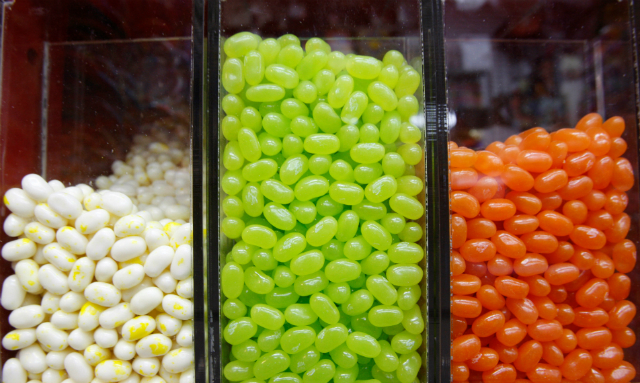
Credit: Kathy Willens / AP Images
We know that our brain plays tricks on us, but did you know the size of your plate can dictate how much you eat? Or that a bowl filled with jelly beans in a variety of colors will induce you to eat more than a series of bowls with the jelly beans separated out by color? Rachel Herz, a neuroscientist at Brown University and the author of Why You Eat What You Eat: The Science Behind Our Relationship With Food, describes the psychology that influences our eating habits.
Three Takeaways:
- Herz explains that our brain can work in weird ways when it comes to food. The Delboeuf Illusion, for instance, makes us feel like we’re eating less food if it’s on a bigger plate.
- Information - presented in the right way - can help us eat less. Herz describes a study in Baltimore that posted the number of miles you’d need to walk to burn off a soda. This strategy appeared to be more effective at convincing kids to seek healthier options than posting calorie counts.
- As new and often-conflicting advice comes out about what we should eat, Herz believes we should be hesitant to jump on board. “Take it with a grain of salt,” she advises.
More Reading:
- The taste map of your tongue that you learned about in school isn’t accurate. Smithsonian.com gives us the backstory on how the false idea spread.
- Why do we like eating a variety of different foods? This study explores the answer.
- After nearly eight years of working out the details, the FDA will start mandating that calorie counts be posted at chain restaurants in May of this year, according to Forbes.

